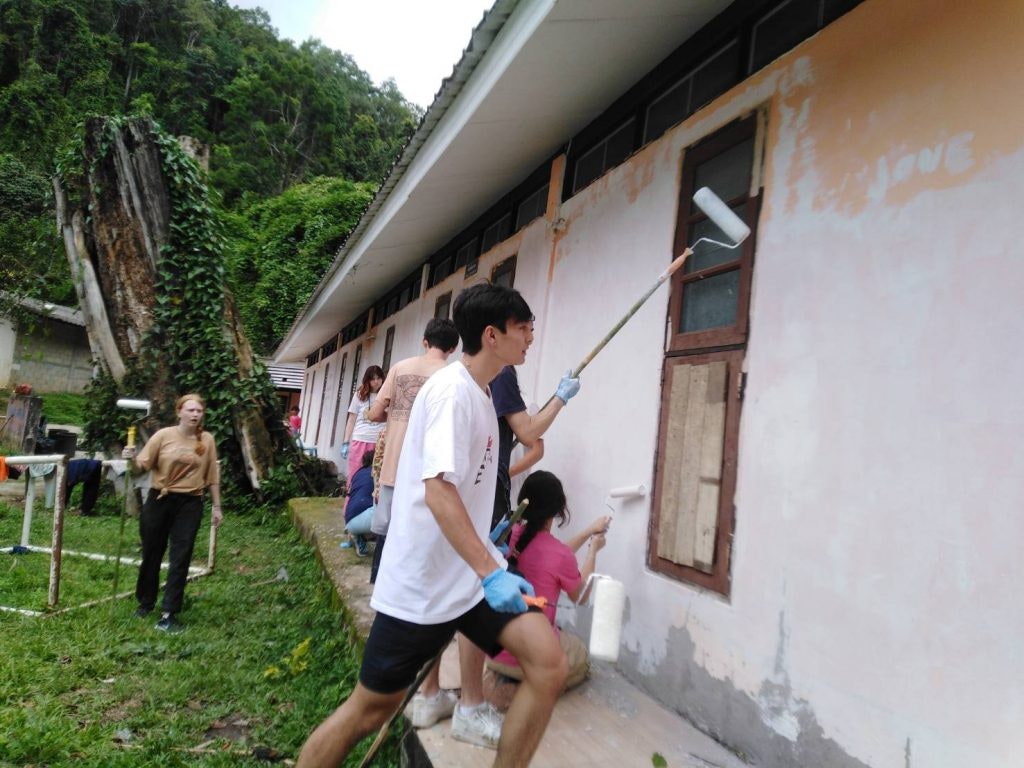







Sometimes students are surprised by how much they enjoy community service travel programs. Culturally, many Americans often associate summertime with lazy days at the beach. Spending that time instead with tasks like mixing cement, helping baby turtles and planting trees may not come to mind. But the science is clear: community service travel is rewarding both for the people doing the service and for the communities benefiting from it.
But how do teens learn to love community service travel? Here are three ways to foster an interest in giving back:
As noted in our pre-summer volunteering blog, studies show that teens who choose to serve are more likely to volunteer in adulthood than those who only volunteer because it’s mandatory. Therefore, the mandatory service hours that some schools require only go so far.
Getting teens involved in picking the right community service travel program really helps. Considerations include:
There is a wide variance in the number of service hours students get on different community service travel programs. The range for Rustic Pathways’ options can be viewed on our program page. There are community service travel programs with a small amount of service, such as Big Fiji Explorer with six hours and Puerto Rico Paradise and Moroccan Wanderer with ten. On the other end of the spectrum are intensive service programs like Come With Nothing: The Rustic Expedition in Thailand.

Rustic Pathways students paint a school in a remote village in Thailand.
For projects, students interested in the environment have a variety of community service travel options to choose from. Some programs like Hawaii Service offer opportunities to work with plant life. Other community service travel experiences focus on animals. This includes programs that center on a wide diversity of animals like Animal Conservation in Australia, along with programs with a more specific focus like the Turtle Conservation Project in Costa Rica and the Thai Elephant Conservation Project in Thailand.
Many other programs give a bit of a mixture of nature and infrastructure projects. This includes popular programs like Pura Vida Service in Costa Rica.
In terms of community interaction, this can vary depending on the country and the current climate. Interaction was limited because of Covid in the past. Now more time with community members is possible. For students who want to work the most directly with local community members and children some of the best bets include the Summer Camp Leadership program in Costa Rica and Culture and the Crater in Tanzania.
View a welcoming ceremony for Rustic Pathways students who traveled to Tanzania in the summer of 2022:
During service, program leaders explain the significance of what the students are doing. However, it’s still good to get some reinforcement of the whys behind the efforts.
Students can be encouraged to learn more about the communities they are visiting before they go. As an example, in Costa Rica the government is unable to provide much support to schools so a number of service projects center on educational projects. Program fees that the families pay allow the communities to buy the supplies needed to make infrastructure improvements while the students supply much of the labor. Understanding this reality and where a student is traveling makes the experience more impactful.
On a similar note, many of the projects centered on nature illustrate how small tasks make a huge difference. Picking up a piece of plastic could prevent a sea turtle from eating it, possibly saving the lives of an endangered species. Learning about these types of factors that threaten animals and plant life enables students to realize the significance of their efforts.
For more details read: How Rustic Students Make a Global Impact
This may sound simple but encouragement is always welcome. In a world where students are pushed to get good grades and star in school activities, they may not get as much attention for small service initiatives. Therefore, giving a pat on the back goes a long way.
Historically teens have had a high rate of volunteerism but that is even more important now as the Baby Boomers retire and the smaller Generation X can’t fill in all the gaps. So encouragement of the younger generation is needed to help communities thrive.
If there is any doubt about the impact, just read a few student stories to see how their service has made a difference.
Here are a few other blogs that also can inspire a service mindset:
How Teens Can Prepare for Community Service Travel & Make it Worthwhile
Seven of the Best Service Travel Programs
How the Pandemic Changed Volunteering: Seven New Trends
Summer Travel: Helping Local Communities Regain What Was Lost